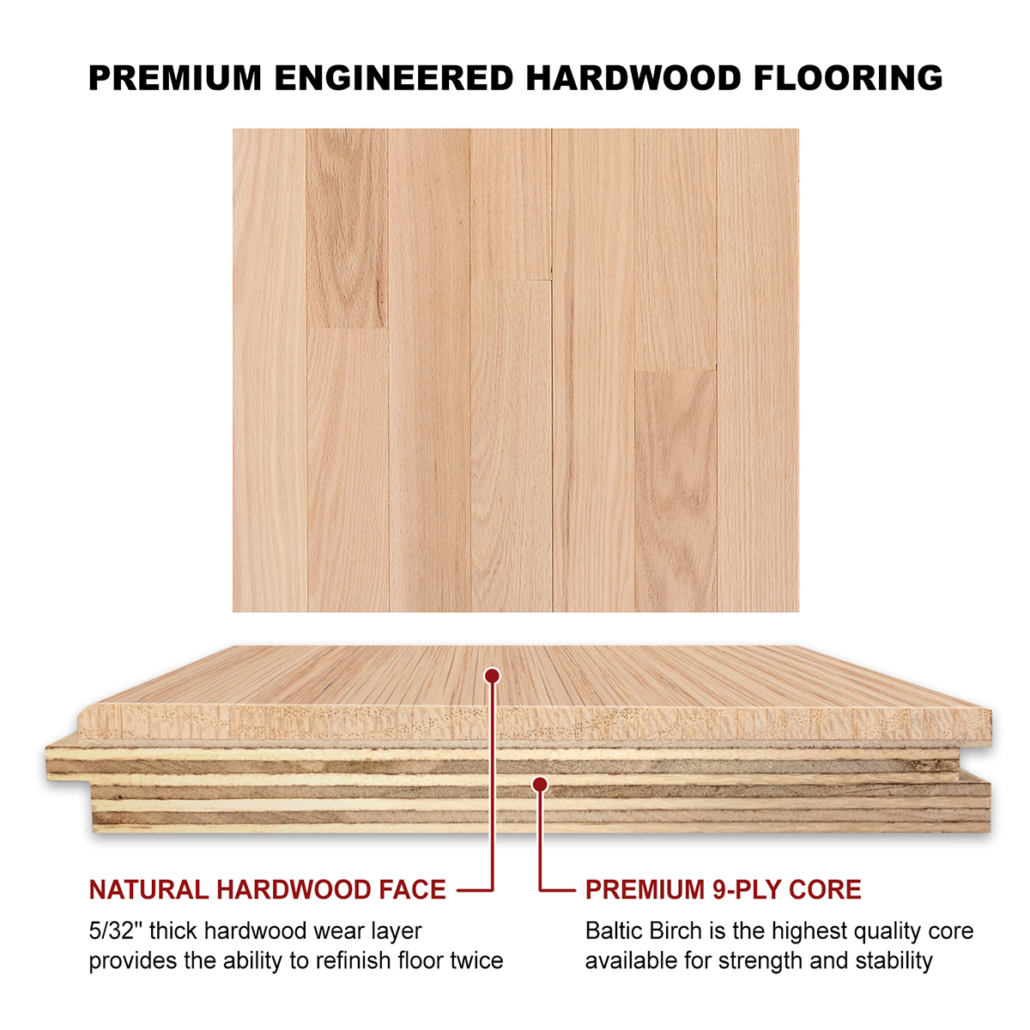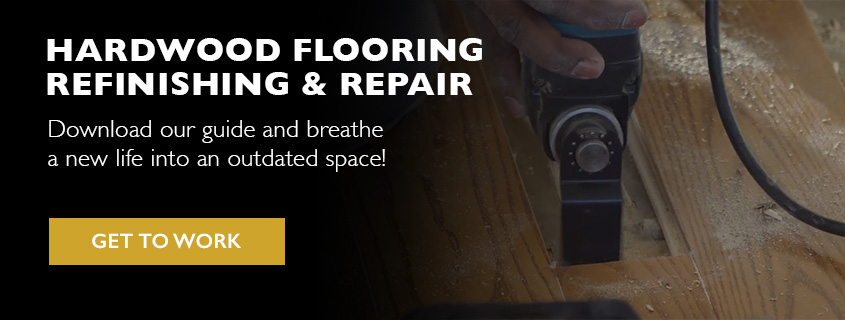Engineered Hardwood Flooring vs. Natural Solid Hardwood Flooring
In today’s world, there are a ton of flooring options to choose from: solid hardwood flooring, engineered hardwood flooring, carpet, tile or even laminate flooring. Many homeowners end up drilling down to two options – real hardwood flooring or engineered wood flooring.
So, when it comes to the engineered hardwood vs. hardwood debate, what are the key differences? And which one should you choose for your home? Let’s find out!
Flooring Installation
Engineered hardwood and natural wood have slightly different installation methods, but both engineered hardwood floors and solid hardwood flooring can be installed easily, making them a great DIY project.
Get Installation Methods From the Experts
We recently sat down with Sam and Josh Vuletich from Affordable Hardwood Flooring and Refinishing to discuss the different types of flooring options and installation methods, as well as industry upgrades in nailing, stapling and more!
Sam and Josh have a plethora of experience installing both types of flooring, including prefinished engineered floors and real wood planks. They have installed floors at a variety of price points — from smaller, square-foot homes to full basketball courts. Learn more about installation methods for the flooring options to choose from!
Watch Here:
Why Choose Solid Hardwood Floors?
Solid hardwood floors are made from solid pieces of natural wood and are popular in both homes and businesses for a reason. Solid wood flooring is easy to keep clean, extremely durable, long-lasting and adds a touch of elegance to any space.
#1: It’s Sustainable and Holds Value
One of the most compelling reasons to choose a hardwood floor is that it’s a natural product! Unlike synthetic materials, hardwood floors from Baird Brothers are cut from sustainably-managed forests, which ultimately leaves an extremely small footprint. And unlike the offgassing of formaldehyde from laminate flooring, natural hardwoods actually IMPROVE air quality and continue to store any carbon the tree consumed when it was standing timber!
But, real wood flooring’s sustainability factor doesn’t end there! You can refinish solid wood flooring multiple times, extending its lifespan and reducing the need for a new floor. With this flooring option, you can easily sand and stain your hardwood to get an entirely new look, all with the same existing floor. This benefit increases the value of your home, making hardwood flooring an ideal investment for any homeowner.
#2 It’s Durable and Customizable
With solid wood floors, there are many types of hardwood species to choose from, each with its own unique grain and color. And because wood is a natural material, no two boards are exactly alike. Hickory is a common choice, thanks to its durability, as is white oak, for its consistent, beautiful grain pattern and ability to accept stain.
More recently, wide-plank flooring has become extremely popular. For homeowners seeking a more contemporary or clean look, live sawn, wide plank white oak flooring is a beautiful choice!

Are There Disadvantages to Natural Hardwood Floors?
Although hardwood floors are beautiful and easy to care for, there are things to consider before making a purchase. If you’re not careful, depending on the type of wood used (and where it lives on the Janka hardness scale), some hardwood options can be scratched or dented. That’s why it’s important to work with a knowledgeable supplier who can guide you toward the best specie options for each individual application.
In addition, hardwood floors can be susceptible to water damage and are limited by the types of surfaces they can be installed on. If you live in an area with high humidity or your home tends to see a lot of moisture (spills, rain, etc.), real hardwood floors may warp if not well-maintained.
What Is Engineered Hardwood Flooring?
Engineered hardwood floors are made from a hardwood layer (of real wood) that is bonded together with adhesives. Engineered flooring from Baird Brothers utilizes a 9-ply Baltic birch core that can be more dimensionally stable than solid hardwood floors. They can also be installed over concrete slabs, radiant heating or below grade (in basements), making them a great option for homes in all climates.
The top layer of engineered hardwood floors consists of a thin piece of stained and sealed hardwood veneer which can be refinished (but not as often as solid hardwood floors, since the top veneer layer has less wood to sand down when refinishing the floor). If you do decide to refinish your engineered hardwood floor, it’s important to hire a professional who has experience with this type of flooring.

Engineered hardwood flooring can be a popular choice for many homeowners because this type of flooring offers the natural beauty of hardwood with the added durability of a Baltic birch core. Plus, it’s easy to install and comes in a wide variety of colors and styles.
Find Your New Floors Today
For many homeowners, hardwood floors are the gold standard. They’re classic, elegant and increase the value of your home. But, engineered hardwood flooring can give you the same look with its own unique benefits, too.
So, engineered hardwood flooring vs. solid hardwood flooring; which one should you choose? The experts at Baird Brothers Fine Hardwoods can walk you through the decision process and help you in your journey to beautiful, new high-quality hardwood floors! Reach out today!




